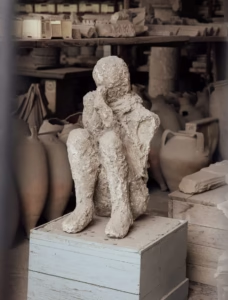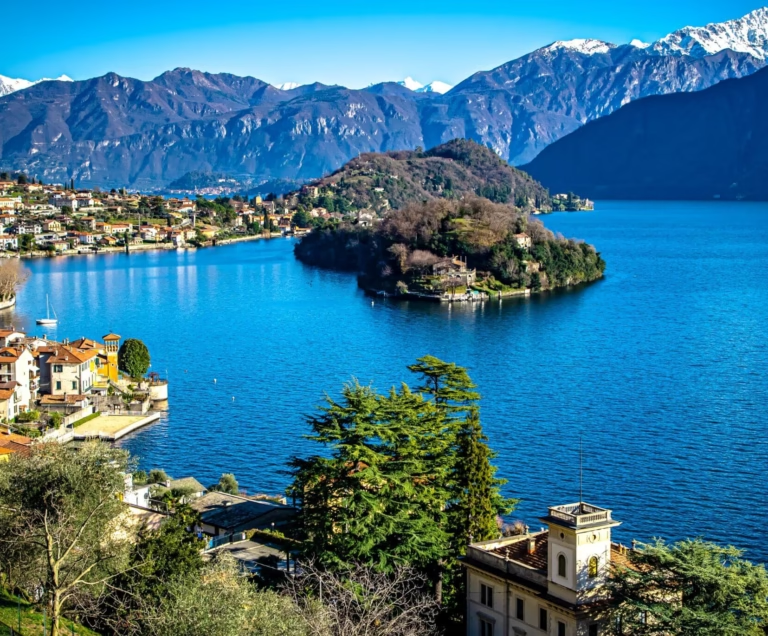The Colosseum in Rome

The Colosseum or Coliseum, also known as the Flavian Amphitheatre, is an oval amphitheatre in the centre of the city of Rome, Italy. Built of travertine, tuff, and brick-faced concrete, it is the largest amphitheatre ever built. The Colosseum is situated just east of the Roman Forum.
For travellers making their way through Italy, the Colosseum is a must see. This huge Amphitheater is the largest of its kind ever built by the Roman Empire and has remained a model for sports facilities right up to modern times. Built as a venue for public spectacles and shows – even mock sea battles, it had a wooden floor that was 83 by 48 meters. Underneath it were two stories of tunnels, rooms, cells, and passages for gladiators, workers, wild animals, and storage. Today, the structure stands in stark contrast to the modern development that surrounds it and is a prominent reminder of ancient times and the extensive history of Rome.

The Roman Forum
The Roman Forum may require a little imagination to understand exactly what this area once looked like. However, its historical significance as the heart of the Roman Empire cannot be overstated. Pillars, partial structures, and foundations of former temples, market halls, courts, and public buildings pay tribute to Ancient Rome, which stood here for a thousand years.

The Pantheon
The Pantheon, an exceptionally well preserved remnant from Roman times, reveals the incredible architectural achievements of the Roman Empire. The precise proportions of the building, with the height equal to the diameter, and a single beam of light penetrating the room from the top of the dome, give the room a unique character. Italian Kings, the Renaissance painter Raphael, and other great Italians are buried in the Pantheon.
The Pantheon, in the historical centre of the City, is one of the best kept ancient monuments in the world. So called because it was a temple dedicated to many deities, particularly to Mars and Venus, it was built by order of the consul Agrippa, friend and son-in-law of Augustus, in 27 BC.
Surprisingly, almost all we can admire today of this famous monument, goes back to Roman times, even the dome and the massive bronze door of the entrance, which goes back to Hadrian’s time (76-138 AD), the emperor who had it re-built in 130 AD. In 609 the building became a Christian church and this probably contributed to its preservation, as in other similar cases. In the interior, where once there were the statues of various gods, there are some tombs, among which those of King Victor Emmanuel II, Humbert I and the Queen Margharet and Raphael Sanzio, the famous painter.


The Interior of the well Preserved Patheon

Mt Vesuvius
The still smoking volcano of Mt. Vesuvius looks down on the remains of the city it destroyed in AD 79. But that same eruption also preserved many of the city’s art treasures: frescoes, mosaics, and sculptures that were encased in the lava as it cooled. Several centuries of excavations have revealed the remains of houses, markets, baths, temples, theatres, streets, and human remains. Visitors can tour the site, walk along the old streets scarred by the tracks of chariots, and see the engineering used by Romans over 2,000 years ago. Italy, a European country with a long Mediterranean coastline, has left a powerful mark on Western culture and cuisine. Its capital, Rome, is home to the Vatican and landmark art and ancient ruins. Other major cities include Florence, with Renaissance masterpieces such as Michelangelo’s “David” and Brunelleschi’s Duomo; Venice, the city of canals; and Milan, Italy’s fashion capital.
As the birthplace of the Roman Empire and the Renaissance, it’s not surprising that Italy should be so rich in masterpieces of art and architecture, or that it should have more UNESCO World Heritage cultural sites than any other country in the world. But Italy’s top attractions for tourists are not all art and architecture; the country is blessed with lakes, mountains, and a dramatic coastline that gives it outstanding natural attractions.


A street in Pompei, the stepping stones are for pedestrians to cross while allowing the horse and chariot to pass by.
One of the citizens of Pompei, that were covered in ash, died and was preserved
The Leaning Tower of Pisa
The Leaning Tower of Pisa is actually just one of many attractions in the city of Pisa, but its fame, gained from its flaw, is world renown. Work began on the tower in the 1100s, and the sinking, which led to the lean, began by the time the tower reached the third story. Prior to restoration work in the 1990s, they predicted it would topple over by the year 2000. Today, visitors can climb up the stairs of the tower for a fabulous view of the city. The Leaning Tower, also known as La Torre Pendente, stands on the Piazza dei Miracoli, a setting it shares with the beautiful Romanesque Cathedral of Santa Maria Assunta and a round freestanding baptistery. Each of these features outstanding works of medieval stone carving.


The beautiful Lake Como
Lake Como is one of Italy’s most scenic areas, surrounded by mountains and lined by small picturesque towns. A haunt of the wealthy since Roman times, the lake has many opulent villas and palaces along its wooded shores, many of them surrounded by gardens open to the public. The mild climate that makes the lake shore ideal for gardens is also a draw for tourists, with characteristics similar to that of the Mediterranean. Along with the resort towns around the lake, there’s also an 11th-century abbey.
